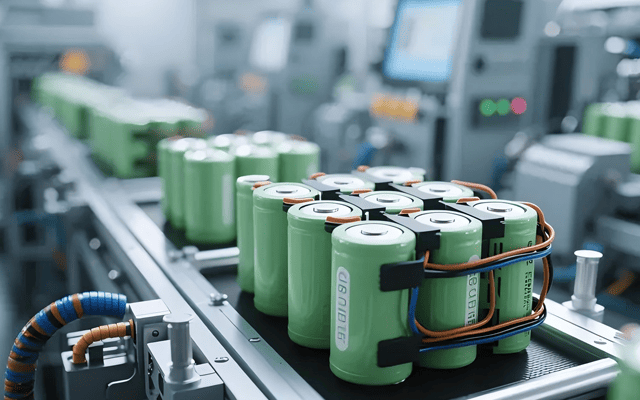As renewable energy technologies continue to expand, efficient and reliable energy storage has become the foundation of sustainable power systems. For years, lithium-ion batteries have dominated this field, but sodium-ion batteries are now emerging as a powerful alternative. Both technologies offer unique strengths and face specific challenges. This article explores how they differ — and which one may shape the next era of energy storage.
1. Understanding Lithium-ion Batteries
A mature and proven technology
Lithium-ion batteries (Li-ion) are widely used in electric vehicles, consumer electronics, and large-scale energy storage. Their high energy density, long lifespan, and stable performance have made them the industry benchmark.
Supply chain and resource challenges
However, lithium is a finite resource concentrated in a few regions, such as South America’s “Lithium Triangle” and parts of Australia. In addition, many lithium batteries rely on cobalt, a metal that is costly and often linked to environmental and ethical mining concerns.
As demand grows, the pressure on raw materials, coupled with geopolitical risks, leads to rising costs and supply instability.
Recycling limitations
While recycling technologies for lithium batteries exist, the recovery rate remains low, and the process is often energy-intensive and expensive. The variety of battery chemistries further complicates efficient recycling.
Safety considerations
Under extreme conditions—such as overcharging, high temperatures, or mechanical impact—lithium-ion cells can experience thermal runaway, resulting in fires or explosions. This is a key concern in residential and commercial storage applications.
2. The Rise of Sodium-ion Batteries
Abundant and low-cost materials
Sodium-ion batteries (Na-ion) use sodium, one of the most abundant elements on Earth. Unlike lithium, sodium resources are evenly distributed and inexpensive to extract.
Moreover, sodium-based cells can use aluminum as the current collector on both electrodes, replacing the costlier copper used in lithium batteries, further lowering production costs.
Enhanced safety
Na-ion batteries offer better thermal stability and lower flammability, significantly reducing the risk of fire.
They can also be fully discharged to zero volts during transportation, minimizing short-circuit hazards — a major advantage for logistics and storage.
Wide temperature adaptability
Compared with lithium-ion batteries, sodium-ion batteries perform more reliably across extreme temperatures, typically from –30 °C to +60 °C. This makes them suitable for harsh climates or remote areas where environmental control is limited.
Eco-friendly and recyclable
Na-ion batteries contain no rare or toxic metals, simplifying recycling and reducing environmental impact. Their simpler chemistry supports more sustainable large-scale energy systems.
3. Where Lithium-ion Still Leads
Although sodium-ion batteries are promising, lithium-ion technology continues to hold the upper hand in several critical aspects:
-
Higher energy density: Li-ion batteries deliver 250–300 Wh/kg, compared to 150–170 Wh/kg for Na-ion, making them ideal for weight-sensitive devices and EVs.
-
Longer cycle life: High-quality Li-ion batteries can exceed 5,000 charge cycles, while most Na-ion prototypes currently range from 1,000–2,000.
-
Superior efficiency: Lithium-ion cells achieve charge–discharge efficiencies above 95%, while sodium-ion systems typically remain slightly lower.
In short, for applications requiring maximum power and compact design, lithium-ion remains the most practical solution.
4. Choosing the Right Battery for Your Application
| Application | Recommended Technology | Reason |
|---|---|---|
| Electric vehicles, drones, portable tools | Lithium-ion | High energy density, lightweight |
| Home or commercial energy storage | Sodium-ion | Safer, cheaper, environmentally friendly |
| Harsh environments (cold or hot) | Sodium-ion | Wide temperature tolerance |
| Long-life industrial systems | Lithium-ion | Proven reliability and efficiency |
In many future projects, hybrid systems may combine both battery types to balance cost, safety, and performance — a strategy that’s gaining popularity in off-grid and renewable energy systems.
5. The Road Ahead
Sodium-ion batteries are advancing rapidly, but several technical hurdles remain before mass adoption:
-
Improving cycle life: Continued R&D in electrode materials is essential.
-
Increasing energy density: Innovations in cathode chemistry and structure optimization are underway.
-
Scaling production: Building a mature supply chain will lower costs and accelerate commercialization.
-
Gaining market trust: Real-world performance validation will help sodium-ion batteries earn user confidence.
Major manufacturers, including CATL and other Chinese innovators, have already introduced sodium-ion products, signaling that commercialization is closer than ever.
6. Conclusion
Both lithium-ion and sodium-ion batteries are crucial pillars in the future of clean energy.
Lithium-ion technology will continue to dominate where power density and compactness are key, while sodium-ion batteries will lead in grid-scale and residential storage, where safety and affordability matter most.
As renewable energy expands globally, adopting the right storage solution will determine how efficiently we can capture, store, and use green power.
ELEGE New Energy continues to explore and integrate cutting-edge storage solutions into its renewable systems — from wind-solar hybrid kits to off-grid power solutions.
Discover more innovations at 👉 https://energy-elege.com

